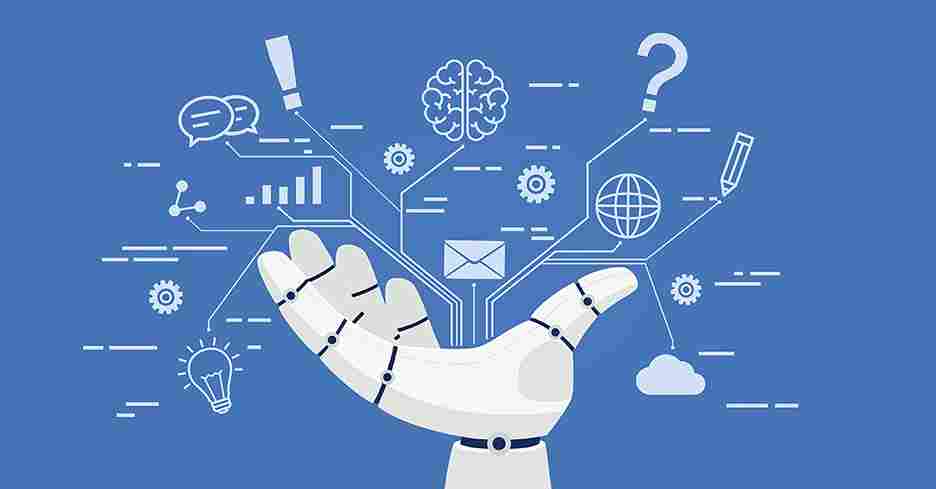Last updated on March 29th, 2024 at 01:10 am
In today’s fast-evolving world, where user experiences shape brand perceptions, the role of front-end services cannot be underestimated. Any trusted front-end development company
plays a pivotal role in crafting user interfaces that captivate, engage, and convert. These companies focus on the outward-facing elements of a website or application, ensuring that the design, functionality, and overall presentation align seamlessly with each other in order to create exceptional digital experiences.
The journey to excellence in front-end services revolves around three fundamental phases: design, development, and delivery. Each of these phases uniquely contributes to transforming concepts into user-centric digital solutions. Starting with design, creative minds collaborate to conceptualize layouts, wireframes, and visual elements that resonate with the target audience. The development phase then takes center stage, where skilled developers meticulously code the interface, bringing designs to life with interactivity and responsiveness. Finally, delivery involves thorough testing and seamless integration to ensure the product is ready to launch.
These three phases collectively contribute to achieving excellence in front-end services. Design bridges the gap between creativity and functionality, ensuring visual aesthetics align with practical user interaction. The development brings these designs to fruition, leveraging coding expertise to create seamless, performant, and user-friendly interfaces. Lastly, the delivery ensures the final product is polished, thoroughly tested, and ready to provide a memorable user experience.
By excelling in each of these phases, front-end development companies ensure that they contribute positively to the overall success of digital projects, delivering solutions that stand out in today’s digital landscape.
Table of Contents
The Design Phase: Shaping Exceptional User Experiences
The design phase emerges as the bedrock upon which remarkable user experiences are built. This phase isn’t solely about aesthetics; it’s about creating an environment where users feel engaged, informed, and inspired. The significance of the design phase lies in its ability to set the tone for the entire digital journey.
Effective design isn’t just about visual appeal; it’s about aligning design choices with user expectations and goals, ensuring every element serves a purpose in guiding users toward their desired outcomes.
User-centered design principles lie at the core of crafting intuitive interfaces that resonate with audiences. The importance of empathizing with users and understanding their needs, behaviors, and pain points cannot be understated. This empathetic approach enables the creation of interfaces that seamlessly guide users through their interactions, anticipating their actions and providing solutions to their challenges. By placing users at the forefront of any design process, intuitive interfaces are born to empower users to navigate digital landscapes effortlessly.
One more thing to mention in the design phase is the responsive approach. Prioritizing responsiveness ensures that interfaces adapt seamlessly to various devices and screen sizes. This adaptability not only enhances user experiences but also positively impacts search engine rankings.
Furthermore, visual aesthetics are pivotal in conveying brand identity and eliciting emotional connections. Every color, font, and element choice is deliberate, contributing to the overall atmosphere and resonating with the target audience. By combining responsive design with compelling visual aesthetics, interfaces are created that don’t just look good; they feel good to use.
The Development Phase: Transforming Design Concepts into Functionality
The development phase emerges as the dynamic engine that brings design concepts to life through functional interfaces. This pivotal phase bridges the gap between imagination and reality, taking the carefully crafted visual elements and breathing functionality into them. Vision takes a tangible shape, creating interfaces that users can seamlessly interact with during this phase.
The development phase thrives on cutting-edge technologies and precise coding practices. Experts proficient in various programming languages and frameworks select the right tools for the task at hand. This tech-powered approach infuses interfaces with interactivity, animations, and responsiveness, captivating users and delivering functional excellence.
The harmonious access to interfaces across different web browsers and operation systems is paramount for any web application. Interfaces need to function seamlessly regardless of whether users are on Chrome, Firefox, Safari, Tor, or other browsers. The emphasis on performance optimization is another factor to consider. The development phase amplifies the user experience through code optimization, swift loading, and smooth interactions. This dual focus on compatibility and performance guarantees interfaces that excel across the digital landscape.
The Final Phase: Delivering the Front-End Product
In the culmination of the front-end development process, the focus shifts to delivering the meticulously crafted product to the client. This phase represents the bridge between digital creation and its real-world application. It involves packaging the developed interfaces, preparing them for integration with back-end systems, and ensuring they align seamlessly with the client’s objectives.
Thorough testing and quality assurance form the bedrock of this phase. Rigorous testing scenarios are employed to identify and rectify potential glitches, ensuring the interfaces function flawlessly across different devices and browsers. Every interaction, animation, and element is scrutinized to guarantee a cohesive, error-free user experience—this commitment to quality guarantees that the final product meets the highest standards of performance and functionality.
In the final phases, seamless coordination between the development team and other stakeholders is the cornerstone of success. Designers, back-end developers, project managers, and other team members work hand-in-hand to ensure the final product aligns with the broader project goals. This collaborative spirit fosters a holistic approach, where every aspect of the project is finely tuned to deliver an exceptional digital product that exceeds the client’s expectations.
Achieving Excellence: A Harmonious Journey
The journey towards achieving excellence is a harmonious symphony of all these three integral phases. These phases intertwine to create a transformative impact on the digital landscape. First of all, these phases should be tying, unveiling the collective impact.
While designers set the stage, crafting concepts of interfaces that merge aesthetics with functionality, and developers breathe life into these concepts, the delivery phase culminates in a polished product primed to delight users across platforms.
At the same time, excellence is not an endpoint but rather a journey fueled by continuous improvement and learning. In the rapidly evolving digital realm, adaptation is the key. Front-end services that remain attuned to emerging technologies, user preferences, and design trends stand as beacons of innovation. This commitment to progress ensures a perpetually elevated standard of excellence.
Related Articles:







